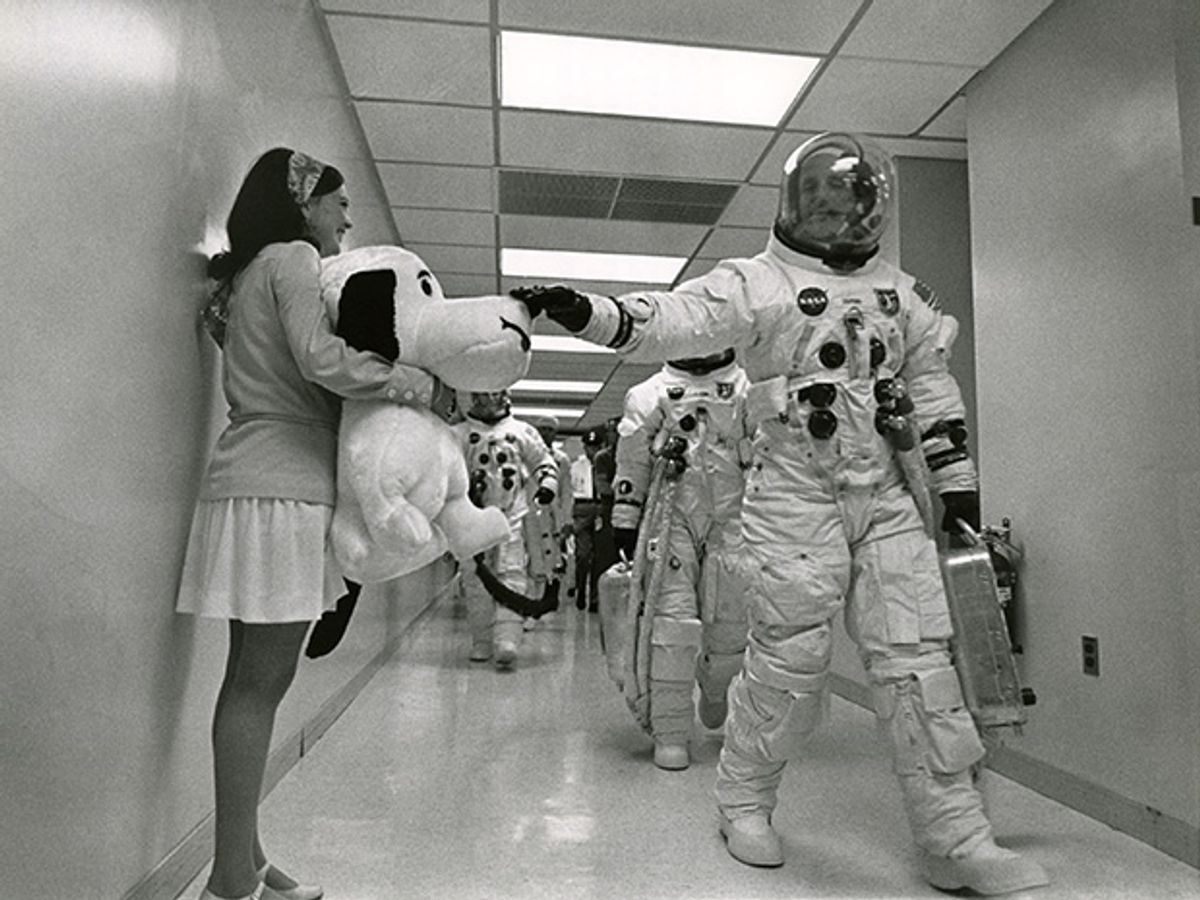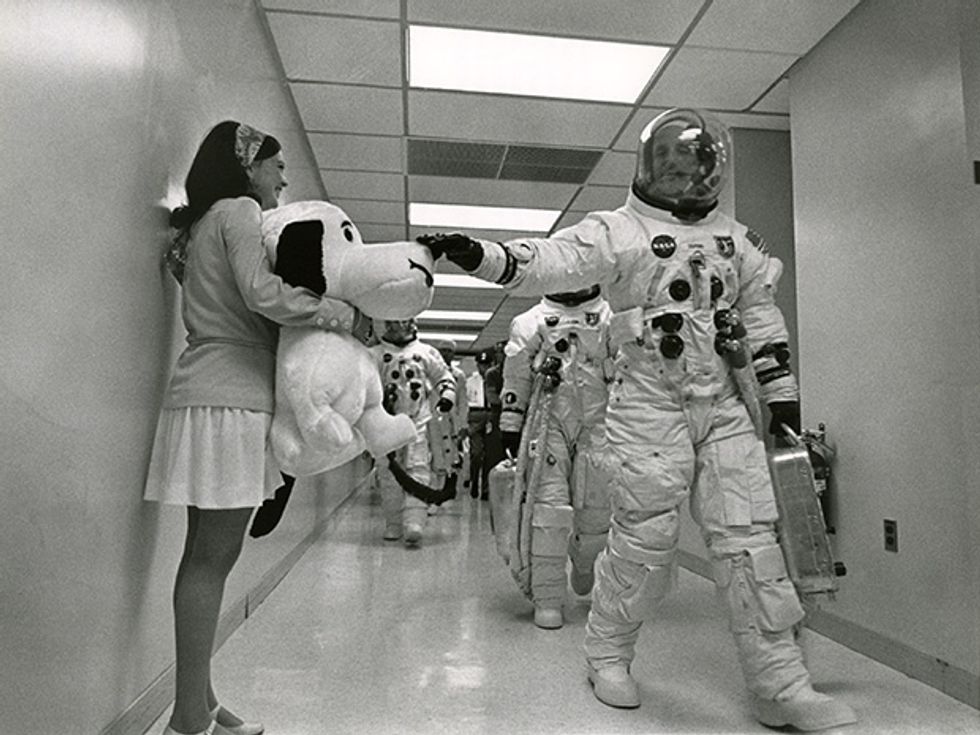The End Of The Cult Of The Astronaut
How do you justify human spaceflight?

This is part of IEEE Spectrum’s Special Report: Why Mars? Why Now?

The space shuttle Columbia has a problem: During launch, foam from the external tank breaks off, strikes the orbiter’s wing, and damages the heat shield. Because the crew members don’t know how the problem will affect reentry, they evacuate to the International Space Station and place Columbia on autopilot, which guides the shuttle to a near-perfect landing. NASA engineers then spend months testing the shuttle during fully automated flights. Crewed flights resume only after the problem has been resolved.
Of course, that scenario never happened, nor could it. The space shuttle has no capability for fully unmanned flights. It’s not just a matter of technology. NASA made sure the shuttle couldn’t fly itself, because the agency feared that such automation might undermine the primacy of the astronaut. Yet if NASA ever wants to see human beings walk on Mars, the cult of the astronaut must end.
The cult blossomed during the earliest days of NASA’s manned space program. Back in the late 1950s and early 1960s, the Mercury astronauts enjoyed rock-star popularity; they were walking embodiments of American individualism, military might, and middle-class values. Later astronauts, including Neil Armstrong and the other moonwalkers, had more education and engineering skill than their predecessors, but their technical prowess was overshadowed by their public personae, promoted by an eager NASA that sent them on world tours after their flights.
NASA’s engineering culture supported the centrality of the astronaut. Initially designated “capsules,” crew vehicles were renamed “spacecraft” to signify the human pilot’s mastery and control. The terminology matched the technology: The spacecraft’s controls, displays, and overall structure were designed with the pilot in mind. Yet many steps in the flights were automated, from the closed-loop launches to the predominantly automatic reentries. No human being could have handled all the complex tasks involved in orbital rendezvous and lunar landings without the aid of computers and fly-by-wire systems.
Some things that could have been automated, though, were not. During the Apollo era, engineers suggested landing the lunar module on the moon first without a crew, before exposing humans to the risky descent. NASA management rejected the plan. Engineers also designed the module so that it could land automatically. That feature was never used on any of the six Apollo landings; pilots switched it off, preferring to have their hands on the control stick. The space shuttle, likewise, has never flown an unmanned flight, nor has its automatic landing feature ever been used.
The last Apollo flight, in 1972, signaled the beginning of a shift in thinking. For the first time, the crew included an astronaut who was not a career aviator. Geologist Harrison “Jack” Schmitt was there because the U.S. scientific community had demanded it. The nonpilots who followed him became known as “mission specialists” (although some say they are really more mission generalists).
Since then, astronaut demographics have steadily expanded from the exclusively white male, all-American-boy military test pilots of the Mercury era to a more diverse population of engineers, scientists, women, and other ethnicities and nationalities. They made possible the spectacular accomplishments of the space shuttle era, including the repairs to the Hubble Space Telescope and the construction of the International Space Station.
But in the public’s eyes, at least, astronauts just aren’t what they used to be. Their image has downshifted from bold frontiersmen to more functionary heroes. Few Americans today can name a single active astronaut. The arrest of Lisa Marie Nowak in 2007 on charges of attempting to kidnap a romantic rival symbolized a new fallibility—some might say humanity—in the astronaut image.
If NASA aims to send humans to Mars, it will have to rethink its entire approach to spaceflight. At present, the space agency maintains a rigid dichotomy between manned and unmanned missions. But a months-long journey to Mars would involve physical challenges—including radiation and bone loss—that we cannot currently counter. It would demand greater reliance on automation, robotics, and telepresence—the use of technologies that allow people to see and otherwise experience a far-off location. In the first missions, human crews might not even touch down on Martian soil but instead remain in orbit and remotely operate vehicles on the surface. Going to Mars would forever blur the line between human and remote missions.
So why keep people in the loop at all? And how do you justify expensive, state-sponsored human spaceflight programs when robotic missions cost so much less? Leaps in technologies such as high-bandwidth communications, high-definition video, and in situ sample processing mean that human spaceflight can’t be justified solely on the principle that people are more capable than machines.
No, the best reason for putting humans in space is to expand the human experience. Such expeditions place people in unique situations and onto unique worlds in ways that broaden our understanding of ourselves. The first crew to reach Mars will have the great fortune to experience a new world, and it will be up to them to convey the wonder of that event to the rest of humanity. We should therefore send people who, in addition to having the usual technical talents and training, are skilled at communicating. They will show how exploration has changed in the decades since the space shuttle and the space station were conceived: more networked, virtually present, and dependent on technology, not just for the air that spacefarers breathe but for their very perceptions of the world.
For more articles, go to Special Report: Why Mars? Why Now?
About the Author
David A. Mindell is a professor of the history of engineering and manufacturing at MIT, he wrote the 2008 book Digital Apollo: Human and Machine in Spaceflight (MIT Press).